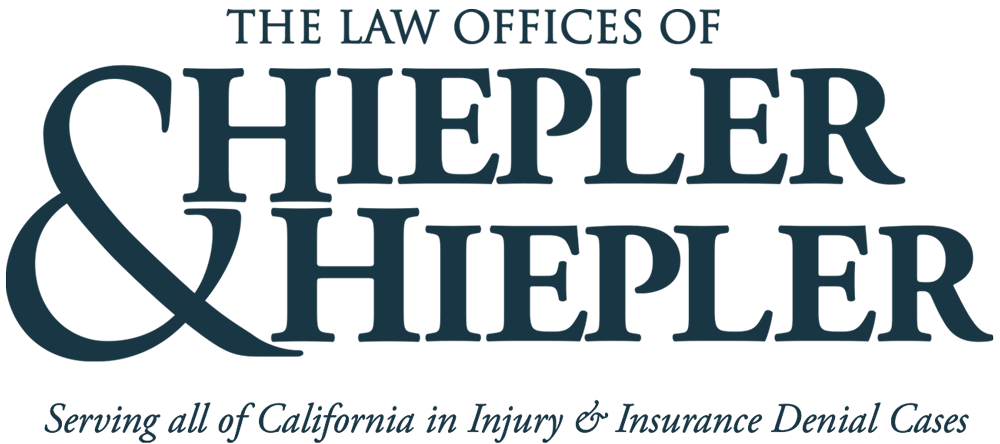HMOs Face a New Nemesis (National Law Journal)
HMOs face a new nemesis
Calif. lawyer succeeds with novel ‘malpractice’ theories.
BY B.J. PALERMO
SPECIAL TO THE NATIONAL LAW JOURNAL
OXNARD, CALIF. – Mark O. Hiepler is as high as a plaintiffs’ attorney can get in this coastal town. He practices on the 15 th floor of one of the two high-rises in a community known for sprawling farms.
From his perch, 55 miles north of Los Angeles, the 36-year old lawyer takes health maintenance organizations and their doctors to task in a practice whose profile is high enough to land him on front pages and TV screens.
Six years ago, he won what was then a record $89.3 million verdict against a health care management organization, as a result of the death of his sister, Nelene Fox. At 38, she died of breast cancer after Health Net, the state’s second largest HMO, denied her a bone marrow transplant. Similarities between that case and the one in John Grisham’s “The rainmakers” have created a wide spread perception that Mr. Hiepler was the model for the fictional lawyer.
If the Riverside County case of Fox v. Health Net, No. 219692, made Mr. Hiepler famous, it also underscored the gravity of his mission. “I’m not just the plaintiffs’ attorney who everyone tells jokes about,” he says. The case put medical malpractice in a new light.
“We’ve taken an area that could be viewed as medical malpractice and put an whole new angle on it, taking into consideration the relationship the HMO has in the whole mix of medical services.” Says Mr. Hiepler [pronounced HIP-ler]
In several cases, he and his wife, Michelle, and James D. McGinley-have accused HMOs of wrongful interference with the doctor-patient relationship. In others, they have explained to jurors the HMO practice of capitation, by which doctors save money by denying patients various services. The money, the lawyers contend, has made doctors and hospitals breach their fiduciary duty.
“Wrongful interference with the doctor-patient relationship is based on the economic tort of wrongful interference with advantage. We take it to that level,” Mr. Hiepler says. “Breach of fiduciary duty is designed for security sales personnel, not for doctors. But you entrust a doctor with your life, not just your affairs.”
Opposing counsel often characterize his approach as a thinly disguised attempt to evade the state’s 1974 Medical Injury Compensation Reform Act, which caps noneconomic damages at $250,000 in malpractice cases. Although Mr. Hiepler’s novel theories have been stricken by some judges, they have survived defense motions in several cases that ultimately settled.
Nevertheless, his malpractice verdicts are notable. In April, Mr. Hiepler won a $6.8 million award for a baby girl who was blinded by a common disease that could have been cured if her HMO doctor had conducted a routine test, according to testimony in Scott v. Hillyard, No. 786489 (Orange Co. Super. Ct.). [See story, Page B7.] “This verdict will prevent premature babies across America from going blind from a treatable, curable disease, instead of falling through cracks in their HMO-provided care,” Mr. Hiepler said at the time.
‘Madison’s still blind.’
As Madison Scott, now 2, recently played at Mr. Hiepler’s Ventura County home with his three children, the lawyer reflected on his mixed victory: “I leave the courtroom, and the jury leaves-but Madison’s still blind.”
In Scott, Mr. Hiepler attempted to circumvent the $250,000 limit by arguing that, decades after enactment of the law, inflation has reduced the value of that limit to $82,200-an unconstitutional denial of equal protection for litigants in recent years. The motion was denied, as usual, subjecting the Scott verdict to a $540,000 reduction during post-trial motions during the summer.
The limit has led to reductions in other verdicts in the past few years. It reduced a $2.9 million – the largest medical malpractice verdict ever seen in Ventura County-to $900,000.
That case, Ching v Gaines, No.137656, was the first in which Mr. Hiepler shifted onus from the HMO to the gatekeeper doctors and their HMO contracts. Joyce Ching died of colon cancer at 35 after two family practitioners, it was alleged, misdiagnosed her and refused to refer her to a specialist or order needed tests.
Making the case.
Much of Mr. Hiepler’s case was based on breach of fiduciary duty, with lengthy testimony on the doctors’ contract-the $27 monthly fee they received per patient, the initial $5,000 they had to pay for any specialized care, the seven minutes they spent with each patient and the 39 patients each seen by one of the doctors on the day of Ms. Ching’s first visit. The judge dismissed the breach-of-fiduciary-duty case and handed the jury a simple malpractice case, saying that he hoped the state Supreme Court would consider some of Mr. Hiepler’s theories.
The Ching case sent ripples through California’s health care community and put HMO doctors on notice. If Mr. Hiepler’s use of breach of fiduciary duty has had a rocky start in the court, it has helped secure settlements in several cases.
Perhaps more significant was the 1995 bad faith case in which he won a $1.4 million arbitration award in Riverside County for breast cancer victim, alleging that the HMOs interfered in her relationship with her doctor. Christine deMeurers died at 34 after the HMO forced an oncologist at the University of California at Los Angeles to reverse his decision to provide a bone marrow transplant. In deMeurers v. Health Net, No. 72 193 01004 94, the arbitration panel cited “extreme and outrageous behavior” by the HMO and called Mr. Hiepler’s theory “a viable new tort.” Like his sister’s bad-faith case, deMeurers was not subject to the limits under the Medical Injury Compensation Reform Act.
Mr. Hiepler, who graduated from Pepperdine University School of Law in 1988, considers his high profile from his late sister’s case a blessing and her curse.” He says that the return on his malpractice work might amount to only $30 an hour, given the research and counseling involved. He is swamped with calls from the news media and letters from lawyers who want to work with him. He gives advice to attorneys, doctors and patients and is a frequent speaker at medical conventions and state legislative hearings. He divides his practice between medical malpractice and personal injury work.
Mr. Hiepler says that the publicity given his large verdicts has helped change the public attitude toward managed care and forced the HMOs to loosen restrictions somewhat.
“A jury is the best source of reform for the HMO management,” he says. “Jurors are not the target of billions of dollars of insurance lobby money. And insurance companies have lost 10 times more in negative publicity than they have in the verdicts they’ve paid.


